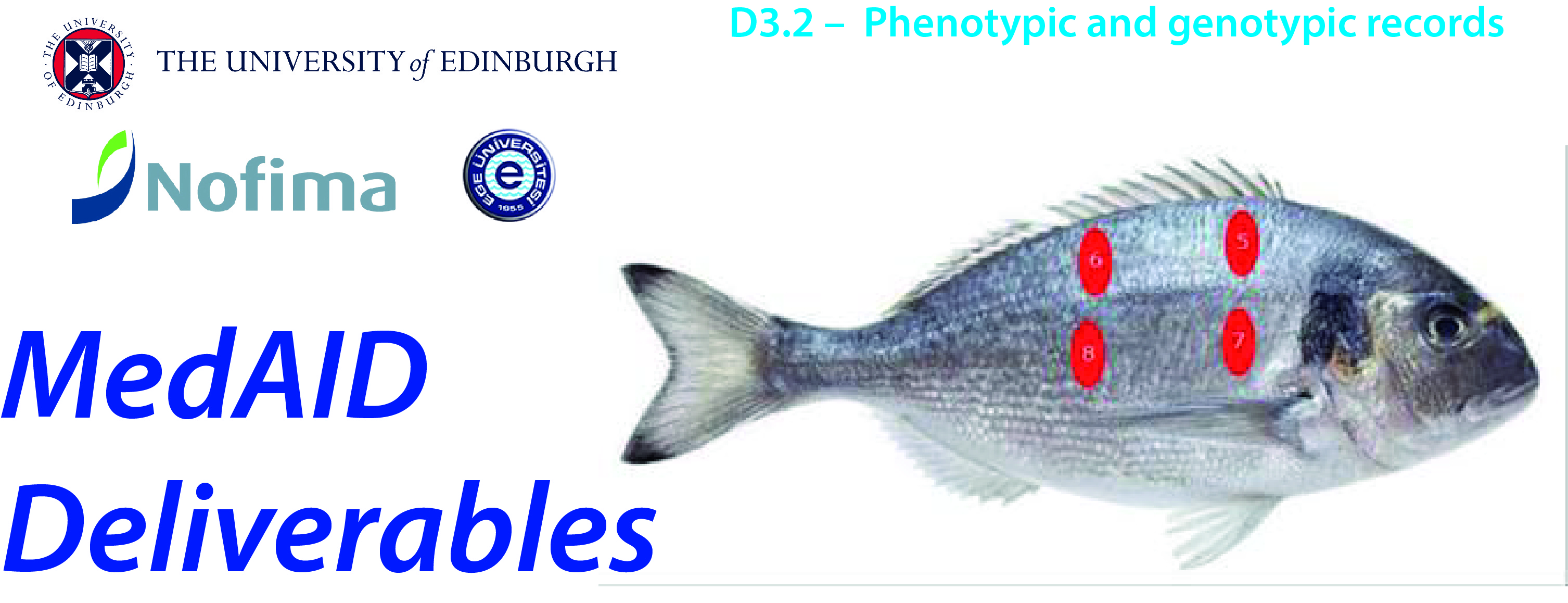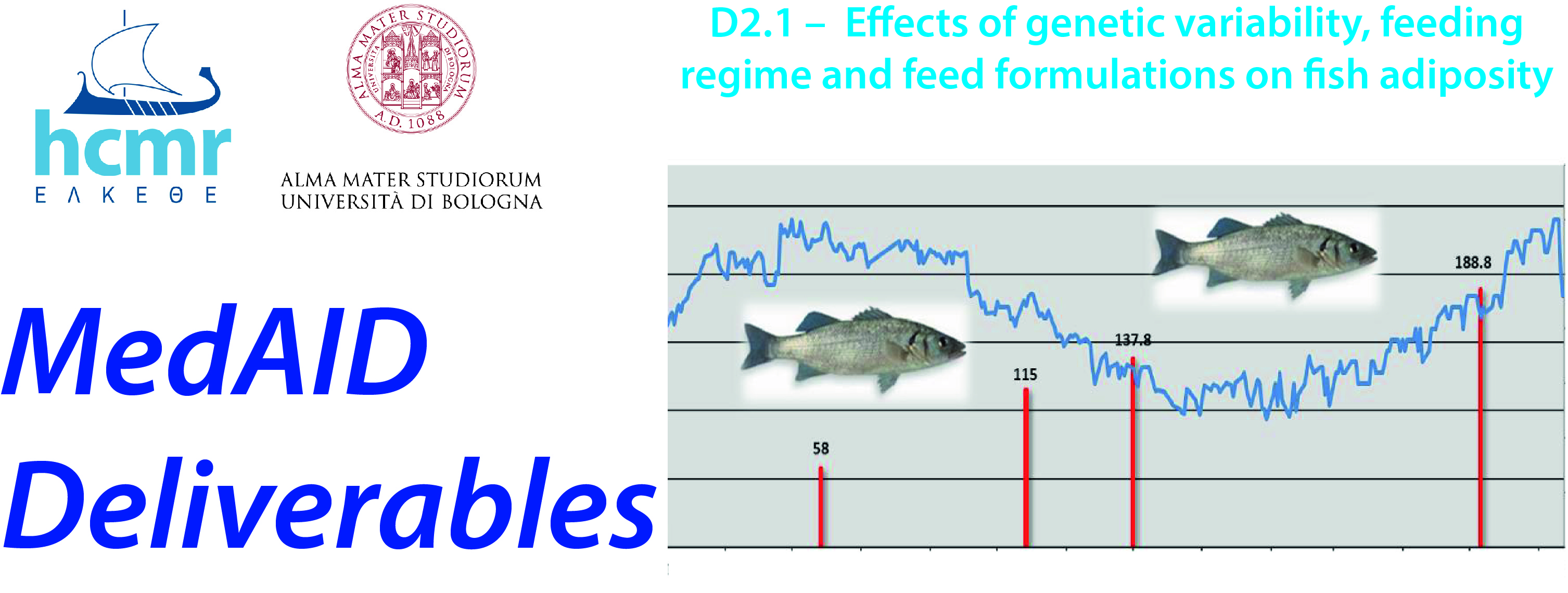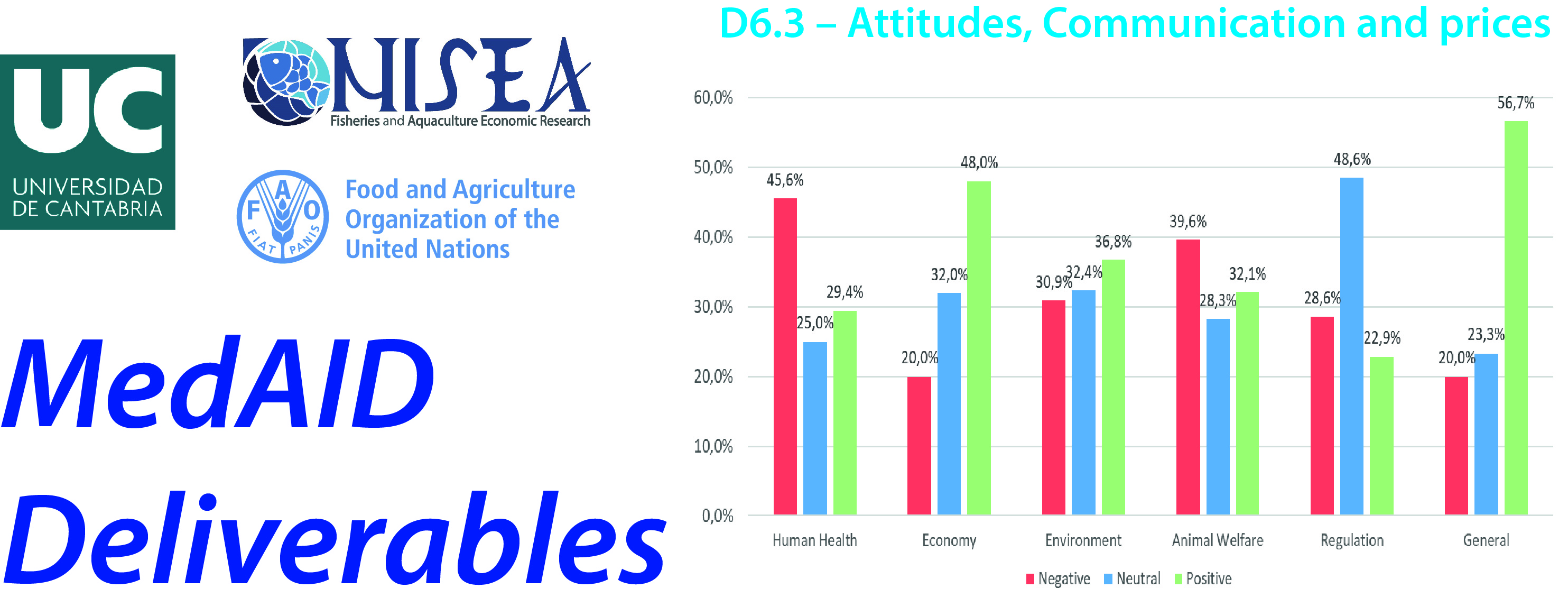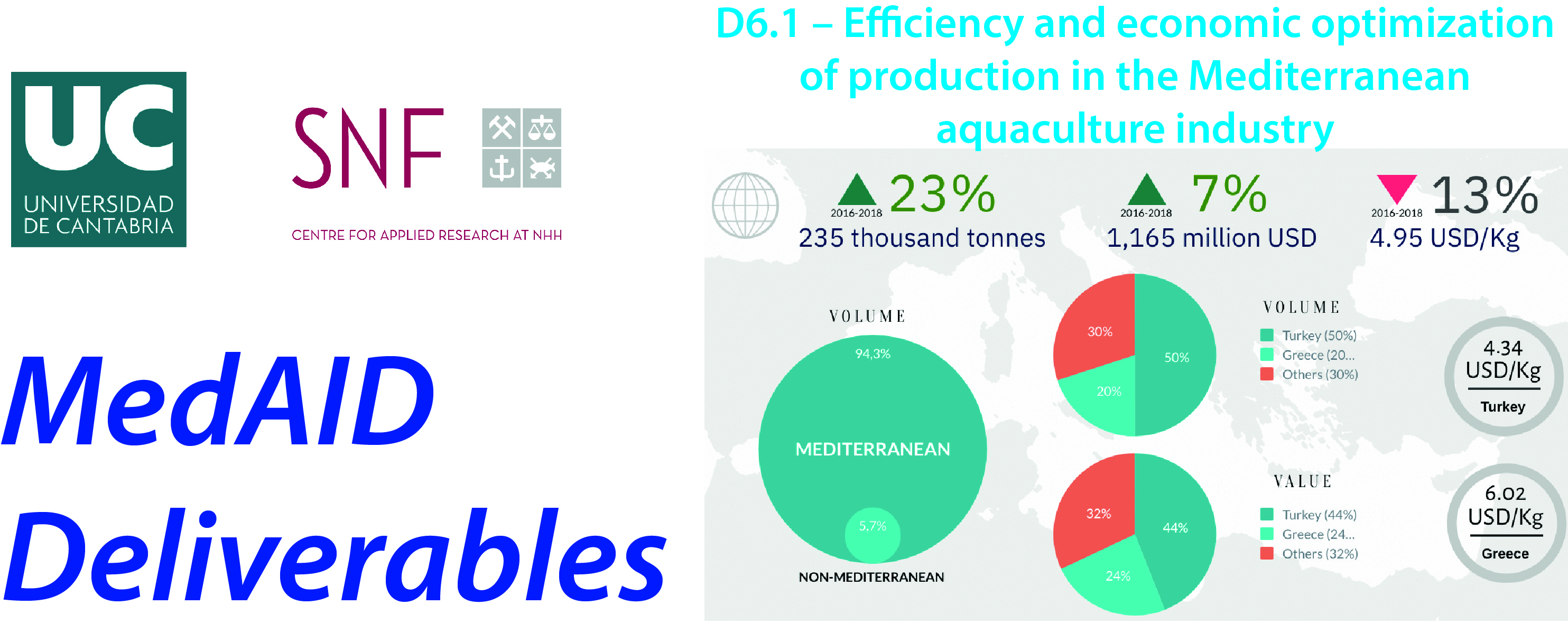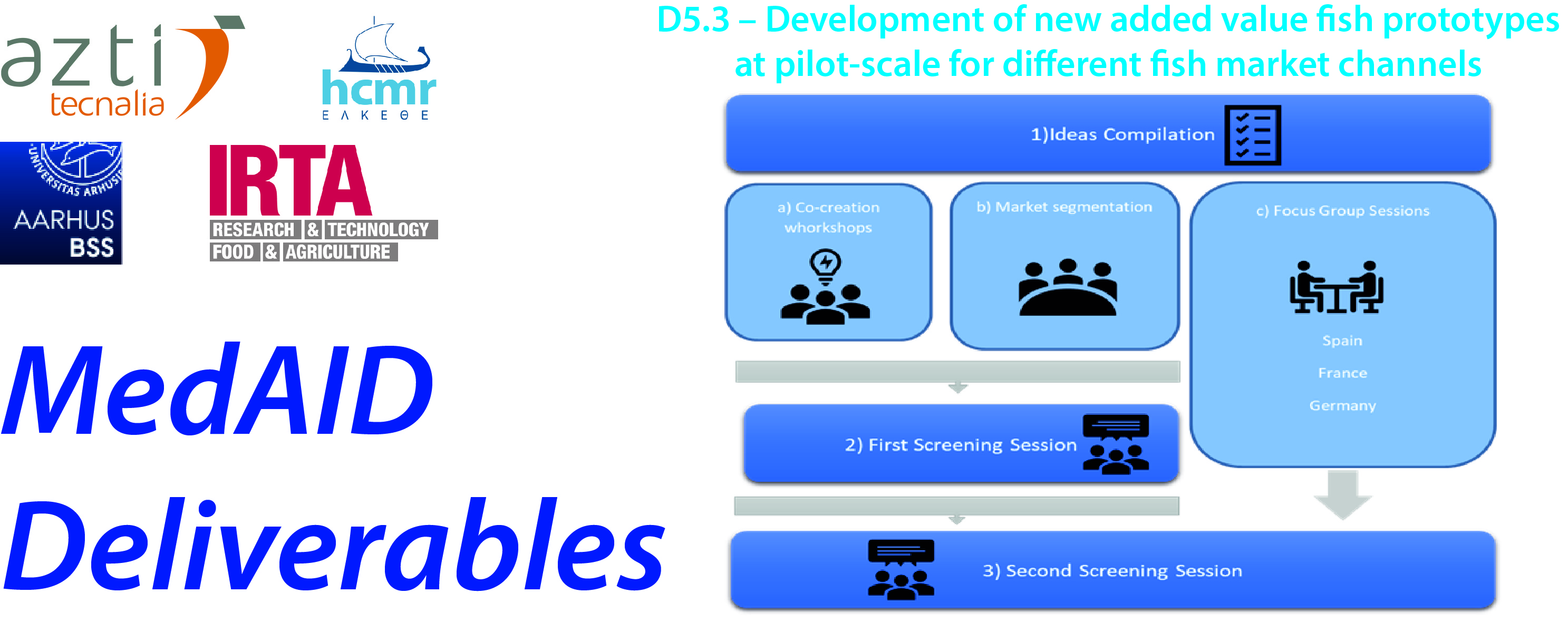This report is part of MedAID Work Package 3 on Genetics and Breeding. This is a multidisciplinary WP that looks to develop and determine the performance of SNP chips in production and breeding populations, and to perform a comparative phenotypic and genetic study of different populations of European seabass and gilthead seabream.
In all animal bioproduction, lipids are important nutrients, because they are linked to production efficiency. The deposition of lipids in organs and tissues, e.g. adipose tissue, liver, muscle, heart and gonads, are also linked to the health, welfare and reproduction of the animals. Hence, compartmentalisation of the lipids is much studied. It is known that constant energy excess may lead to excessive lipid deposition in the body and internal organs and thereby increase the risk of metabolic disorders, oxidative stress and inflammation. However, not only the fat contents but also the fatty acid contents are studied in fish, in particular of the long-chained omega-3 fatty acids EPA (eicosapentaenoic acid) and DHA (docosahexaenoic acid) , because of their beneficial health effects in fish and humans.Continue reading

